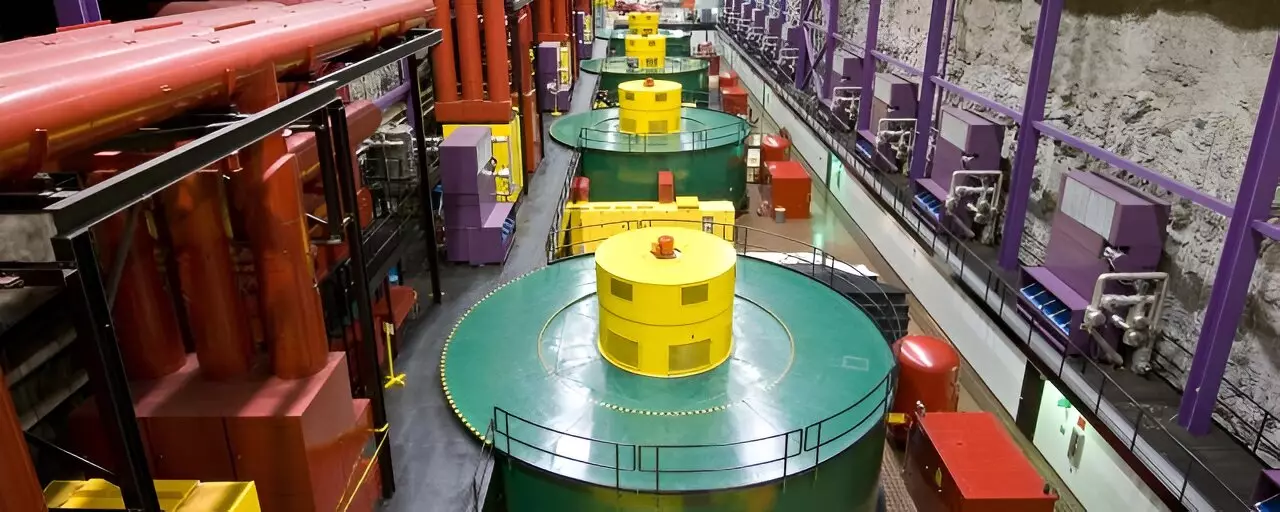In an age where the electric grid is shifting towards intermittent renewable power, the stability of the grid becomes a critical concern. Scientists at Oak Ridge National Laboratory and the University of Tennessee, Knoxville, have developed a groundbreaking algorithm that predicts electric grid stability using signals from pumped storage hydropower projects. This innovation provides crucial situational awareness for grid operators, enabling them to better prepare for potential grid instability.
Hydropower is a renewable energy source that is directly connected to the grid. It provides inertia, which is the kinetic energy needed to maintain the balance between power supply and demand. Large turbines are spun by the force of water, contributing to the overall inertia of the grid. However, the challenge lies in incorporating intermittent renewable energy sources, such as solar and wind, into the grid.
Solar and wind energy sources typically generate power in the form of direct current (DC), which needs to be converted to alternating current (AC) for transmission over long distances. This conversion is done through inverters. While renewables are crucial for a sustainable future, they provide a minimal amount of inertia compared to traditional power plants. Consequently, grids that rely heavily on inverter-connected renewable energy sources have less tolerance for sudden changes, such as storm damage or unusual demand peaks.
To address the challenges posed by intermittent renewable energy, the researchers at Oak Ridge National Laboratory and the University of Tennessee, Knoxville, developed a new algorithm. This algorithm captures the signal from pumped storage hydropower (PSH) projects and combines it with data gathered from low-cost grid sensors deployed nationwide through the FNET/GridEye system.
By combining the PSH signal with the sensor data, the algorithm produces a real-time estimation of grid inertia. This information is crucial for grid operators to assess the stability of the grid and make any necessary adjustments. The researchers also created a visualization interface that simplifies the monitoring process for grid operators. This interface allows them to easily track inertia using the algorithm and be better prepared for potential grid instability.
The new algorithm was validated with the help of utilities and power regulating authorities in both the western and eastern United States, where pumped storage hydropower projects are most prevalent. As the electric grid becomes increasingly reliant on renewable energy sources, the information provided by the algorithm will become even more important for grid situational awareness. It allows operators to effectively monitor the grid and take proactive measures to maintain stability.
The visualization tool developed alongside the algorithm is being demonstrated to utilities and grid coordinating authorities, including the North American Electric Reliability Corporation. By showcasing the importance of inertia and the contribution of pumped storage hydropower, the researchers hope to promote the adoption of this innovative solution. As more intermittent renewable energy sources are integrated into the grid, the role of pumped storage hydropower in maintaining stability becomes increasingly vital.
The algorithm developed by the scientists at Oak Ridge National Laboratory and the University of Tennessee, Knoxville, provides a groundbreaking solution for predicting electric grid stability. By capturing the signal from pumped storage hydropower projects and combining it with sensor data, the algorithm enables real-time monitoring and accurate estimation of grid inertia. This information is crucial for grid operators to ensure stability and adapt to the changing landscape of renewable energy sources. With the visualization interface developed alongside the algorithm, grid operators can easily track inertia and better prepare for potential grid instability. The validation of the algorithm further emphasizes its importance in maintaining grid situational awareness. As the electric grid continues to shift towards renewables, this innovative solution paves the way for a more stable and sustainable energy future.


Leave a Reply